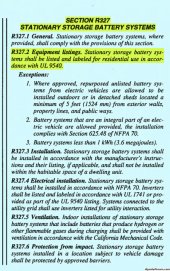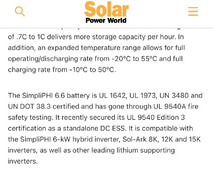The definition of ESS in the 2023 NEC includes this informational note to help differentiate between ESS and UPS:Following up on this a bit.
I was trying to understand what the difference is between ESS and UPS, and what the state of code writing is to disambiguate this (given that ESS is defined expansively enough to include UPS, yet UPS have been installed for much longer and plenty of people still need UPS, including commercial sites that really really care about UPS which one would imagine is a strong forcing function for new code).
Has anyone been following this?
Informational Note No. 2: These systems differ from a stationary standby battery installation where a battery spends the majority of the time on continuous float charge or in a high state of charge, in readiness for a discharge event.
UPS and ESS systems are also listed under different UL standards, the only exception seeming to be UL9540A fire testing for both ESS and UPS lithium batteries.In implementation, ESSs are deployed more widely and in larger sizes then UPS systems, are cycled more frequently, and can send power back to the grid. While a large permanently installed UPS would typically only be installed in limited commercial locations, not at peoples houses. Now as ESS systems are deployed more widely including residential locations, where they may be subject harsh conditions, daily cycling of batteries, limited temperature control, limited fire protection, and limited maintenance and monitoring.





